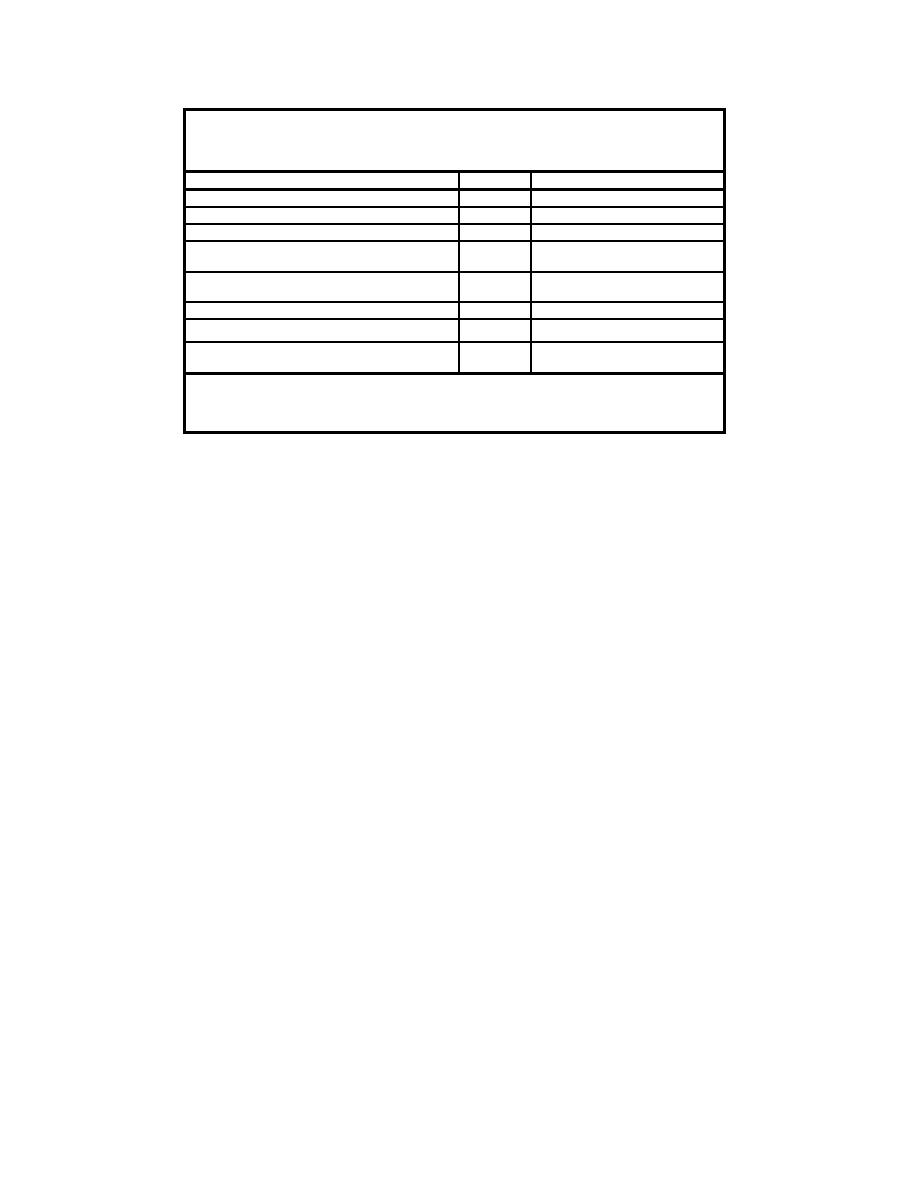 |
||
|
|
||
|
Page Title:
4.1.6 CDF Design for Dredged Material Retention |
||
| |||||||||||||||
|
|
 Table 4-1
Summary of Data Requirements for Prediction of the Quality of
Effluent from Confined Dredged Material Disposal Areas
Data Required
Symbol
Source of Data
Dredge inflow rate
Qi
Project information; site design
Dredge inflow solids concentration
Ci
Project information; site design
Ponded area in disposal site
Ap
Project information; site design
Average ponding depth in disposal site and at the
Dp, Dpw
Project information; site design
weir
Dye tracer or theoretical
Hydraulic efficiency factor
HEF
determination
Effluent total suspended solids concentration
SSeff
Laboratory column settling tests
Dissolved concentration of contaminant in effluent Cdiss
Effluent elutriate tests
Fraction of contaminant in the total suspended
FSS
Effluent elutriate tests
solids in effluent
* This summary includes only those data required for effluent quality prediction. It is assumed that
the disposal area under consideration is designed for effective sedimentation and storage capacity.
Data requirements for such design or evaluation are found in EM 1110-2-5027 (Headquarters,
USACE 1987).
4.1.6 CDF Design for Dredged Material Retention
When the quality of the effluent from a CDF is of concern, the design,
operation, and management of the site should be carefully managed to ensure
retention of TSS within the CDF. This includes aspects relating to both the
volume required for effective sedimentation and the storage capacity of the site.
Procedures for such evaluations are presented in Engineer Manual 1110-2-2-5027
(Headquarters (HQ), USACE 1987) a copy of which is included in Appendix K),
and should be considered prior to the evaluations of potential effluent contaminant
impacts for the project. These design procedures will determine the surface area
and ponding depth required to achieve effective sedimentation, the required
containment volume for storage (including required freeboard), and the proper
sizing of weir structures. The prediction of the quality of the effluent is an exten-
sion and refinement of these design procedures. A list of data items required from
the design evaluation is shown in Table 4-1.
4.1.7 Summary of Tiered Evaluations for Effluent
A flowchart illustrating the tiered evaluation for effluent is shown in Figure
4-2. It should be noted that two types of evaluations of effluent may by required:
1) an evaluation of water quality to determine if applicable water quality standards
will be met, and 2) an evaluation of water column toxicity. Each of these aspects
involves separate evaluation and testing as appropriate.
If a decision regarding effluent cannot be reached based on the evaluation of
existing information in Tier I, Tier II provides methods for effluent screening
based on conservative assumptions. Tier III provides methods for column settling
tests for evaluation effluents TSS, effluent elutriate tests (EET) for evaluating
potential effluent water quality, and methods for conducting effluent water
column toxicity tests. The toxicity evaluations are appropriate if there are COC
for which WQS have not been established, or interactive effects of COC are of
concern.
4-5
Chapter 4
Effluent During Disposal Operations
|
|
Privacy Statement - Press Release - Copyright Information. - Contact Us - Support Integrated Publishing |